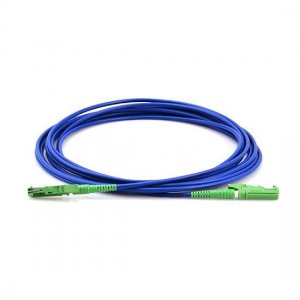
# Fiber Patch Cable: Essential Connectivity Solution for High-Speed Networks
## Introduction to Fiber Patch Cables
Keyword: Fiber Patch Cable
Fiber patch cables, also known as fiber jumper cables or fiber optic patch cords, play a crucial role in modern network infrastructure. These cables serve as the vital connection points between network equipment, enabling high-speed data transmission across various applications.
## Key Features of Fiber Patch Cables
Fiber patch cables offer several advantages that make them indispensable in today’s digital landscape:
– High bandwidth capacity
– Low signal attenuation
– Immunity to electromagnetic interference
– Lightweight and flexible design
– Secure data transmission
## Types of Fiber Patch Cables
### Single-mode vs. Multimode
Single-mode fiber patch cables are designed for long-distance communication with a smaller core diameter (typically 8-10 microns). Multimode fibers, with larger core diameters (50 or 62.5 microns), are better suited for shorter distances but offer higher bandwidth capacity.
### Connector Types
Common connector types include:
– LC (Lucent Connector)
– SC (Subscriber Connector)
– ST (Straight Tip)
– FC (Ferrule Connector)
– MTP/MPO (for high-density applications)
## Applications of Fiber Patch Cables
Fiber patch cables find extensive use in various environments:
– Data centers and server rooms
– Telecommunication networks
– Enterprise networks
– Medical imaging systems
– Military and aerospace applications
– Industrial automation systems
## Choosing the Right Fiber Patch Cable
When selecting a fiber patch cable, consider these factors:
– Required transmission distance
– Bandwidth needs
– Environment conditions (indoor/outdoor)
– Connector compatibility
– Bend radius requirements
– Cable jacket material
## Installation and Maintenance Best Practices
Proper handling of fiber patch cables ensures optimal performance:
– Always protect connectors with dust caps when not in use
– Avoid excessive bending (follow minimum bend radius specifications)
– Keep connectors clean using proper fiber optic cleaning tools
– Organize cables properly to prevent strain and tangling
– Label cables clearly for easy identification
## Future of Fiber Patch Cables
As network demands continue to grow, fiber patch cable technology evolves to meet new challenges:
– Higher density connectors for space-constrained environments
– Improved bend-insensitive fibers
– Enhanced durability for harsh environments
– Support for emerging technologies like 5G and IoT
Fiber patch cables remain a fundamental component in building reliable, high-performance networks. By understanding their characteristics and proper usage, network professionals can ensure optimal connectivity solutions for their infrastructure needs.